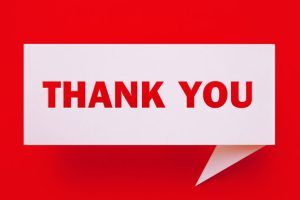When did you decide to become an architect?
I was 14 years old in Northern California. I had a paper route [and] I made enough money to buy a ’56 Chevy, but it needed work. So, I got this job with a speed shop, to work on this car. But my mother stopped me as I went out the door and said, “Burke, I always thought of you as being an architect.” Well, this was new to me. “So, I got you a job with a friend of mine, an architect, and I want you to go try that.” I wasn’t sure that’s what I want to do but I figured I could always work part-time at the speed shop. So, I go to work for this architect, and I had to do whatever needed to be done. I ran a lot of blueprints, but what I found was they were a creative bunch of people, and they were very accepting of me.
It was so damn much fun that I thought, “There is something to this.” After I got to high school, I started to move around. I worked for three or four architects in the area. I was looking at the blueprints and I saw: this is a plan, this is a section, this is an elevation. And I thought, “I think I could do that.” And so, I asked, “Is it okay if I draw some of these?” I was kind of good at that, and, and I found a certain joy in it. I’ve only had two jobs. I delivered a paper and I worked for architects.
I was accepted to Berkeley, but the school was so packed that you had to take all these other classes before you could get into the architectural program. I didn’t have time for that. And they said, “They’ve got a pretty good school at the University of Utah.” So, I came out here.
What is your undergraduate degree in?
In journalism. Let me tell you how difficult that was. I don’t know how to spell. So here I am, in journalism, and I can’t spell, but when I got to the graduate program, I was in my element, and I enjoyed it very much. In fact, I almost didn’t want to leave, but I needed to get out there, get a job and stuff.
In the summers and even during the early years, I worked for some of the firms here in town. I worked for MHTN, and Brixen and Christopher for a while, and for Frank Ferguson with Ray Kingston. And the summer of my last year before I graduated, I went to San Francisco and worked for Wurster, Bernardi and Emmons. It’s kind of a prestigious firm.
I lived in Sausalito but needed to go to San Francisco to work. I would ride my bike down to the ferry at Sausalito, take the ferry to San Francisco and walk to their office. This was a very civilized way to go to work. They told me to be at work by 8:30. I got there the first day at 8:15. They had an all-open environment. When you walk in, everybody sees that you’ve shown up. And they were already there working. I thought I was on time. On the second day of work, I was late, and I thought, maybe I should walk through the back door because it was almost nine. And sure enough, I walk in with these boots on this wooden floor, and everybody turns around, and here’s the new kid. “Who does he think he is?” It took us a while to sort that out. By the time the summer was over, we had come to an agreement that I would try the best I could to get to work on time and it never quite worked out, but they said, “We want you to come back when you finish school.”
I said, “Yeah, maybe I’ll come back.” So, I go back to school and graduated, but in 1972 there was no work in California. In Salt Lake, everything was booming. Edwards and Daniels had work at the time, and Ralph and Judd were very nice. They brought me in. I explained to them that I was only here for a year, and when things picked up, I was going back to California. As it turned out, I never made it back. I stayed. I enjoyed working here.
I hadn’t worked there for three weeks and I got a call from Frank Ferguson. They had just got the Symphony Hall project. Frank said, “Come on over, we want you to help on Symphony Hall.” I said, “It’s a great project. I’ll be there.” So, I have to go back to EDA and say, “Ralph, I’m sorry but this is an opportunity, and I’m not going to be here forever anyway, and this is a project that might be fun to work on.” He said, “Burke, you can’t go chasing around every single great job. You can’t go bouncing around. We’re going to take good care of you. We want you here.” I had to go tell Frank, “Thank you but, I’m going to have to pass.”
Frank Ferguson is a no-nonsense sort of designer. He is simple. Simple is powerful when it comes to design; simple is enduring. So simple is just basically better. And he understood that very, very well. It’s hard to do things simple. If you can do it, you have more enduring building. We do a lot of buildings, but are they architecture? We do a building: the roof doesn’t leak; we can find the front door and all the exit signs work. You know, those things must happen. And they are important things to have to happen. But are they brought to the level of a piece of architecture? Sometimes; sometimes not. There are a thousand buildings before you get to one piece of architecture. Abravanel Hall is a piece of architecture.
How did your career evolve? Why did you stay in Salt Lake City?
I tell you why: I was given some nice projects to work on.
I was given the responsibility to design the initial ’81 expansion of the Salt Palace on South Temple. I was excited. It was a big project. I’m a young guy; 25 or 26 years old and I’ve got to go in and make this first initial presentation to the client. This is what is so wonderful, magic, about this work. It is what keeps you coming back. You’ve got all the drawings, you’ve got the design, and it’s the first time the client sees it. There’s this certain joy that takes place when you reveal this project. They’ve been waiting for it. You’re wanting to be sanctioned, that you’ve done the right thing. And when they see it, they get excited about it. I tell you, it’s compelling, and then you get to do this again and again on every project.
Then as Judd and the firm got older, we were making way for a new generation to take over. I was offered the position of principal in the firm a year and a half after I was there. That might have been a ploy to keep me from wandering off, and it worked, so I stayed. Those guys were moving on. My responsibilities got larger. Good people came in. We had Peter Emerson involved; Peter’s a wonderful leader. John Shuttleworth … So, the firm kind of evolved from Ralph and Judd to Peter and me and John and others.
With that evolution comes the fact that all this joyous work, like designing buildings got throttled back because now you’ve got to go out and get work. You’ve got to prepare. Preparing for interviews is half the thing now that architects do. I didn’t like preparing interviews. I didn’t like to take the time.
And then the last seven or eight years, I could back off and enjoy myself a little bit more – to pick the projects and spend as much time as I could mentoring people. My mentoring role was very fulfilling. I felt like we contributed to the community. I feel good about my body of work; I felt like we had a lot of good people come on up to keep the big story going.
What are you particularly proud of?
The one that stands out is the 2002 Olympic ski jump, bobsled, luge and interpretive buildings. The project had a cast of thousands. I think it is a pretty good building. It’s not really a building. It’s a built environment. It was an opportunity to work on a building type that there are only a few of in the whole world; so, you can work on a unique building type and put it in a context of a unique spot in Utah. The ski jumps were cut into the hill instead of these ski jumps like in Europe where they’re sitting on top of the hill and are on stilts. By doing that, it didn’t seem too much in your face. It also allowed the prevailing winds to come around and blow up the jump so that these jumpers could go for further on the building.
Programmatically the building was simple. There’s one front door and there’s only really one way out – down the hill. Otherwise, you must walk back up. It was an appropriate building. It was laid out well on the hill. The buildings I like best that I’ve done are simple. I don’t do a lot of fussy details. It is going to be a relevant building for a long time.
I still like Governors Plaza. There are a lot of things that went wrong because developers took money out of it. It could have been a better building, but it was an appropriate building on South Temple. A developer tore down a historic building on that site, in the middle of the night because the city was going to file an injunction preventing it from being torn down the next day. Before they did it, he bulldozed the building so he could build an office building where this old house was.
There was no way after that bad behavior that he was going to get approval from the Historic Landmarks Commission to build anything, so he sold it to another developer. That developer came to us. They said, “We want a couple of office buildings here.”
“Well, okay, we’re on South Temple. This has a lot of history. What’s an appropriate building? Are we going to put up some pretend brick and some pretend carriage lights on it and stick it on the street?” That didn’t seem right. So, I called my future partner, Peter Emerson, who did a thesis on South Temple. “Peter, what is your thesis telling you about South Temple?” Peter says, “All those mansions were modern buildings at the time: modern materials, good materials. One of the most important things is that they had open space around it.” So, we designed a building that had open space in the front.
“Let’s make a plaza there. Let’s step the building from a little building on the left. We can go a little higher to the building on the right. Let’s get the massing right. Let’s make it out of modern materials.”
Ralph Edwards wasn’t sure that was going to fly, but we took it to the Historic Landmarks Commission and explained it that way. They said, “We totally agree with you. We don’t want to see pretend old-fashioned buildings.” I like that building, it probably wasn’t well-received. A lot of money was taken out of it. It could have been a little bit better, but it was a no-frills thing.
Disappointments?
The Salt Palace we did in ‘81. The lobby was right next door to Symphony Hall, just 20 feet apart. We designed this slick white, form-conscious thing that was a kind of a signature building. It won some AIA awards. But if you look at it in context, there is this white shiny step building, right next to this very elegant symphony hall. Now, what was going on there? Who was showing off there? As time went on, it bothered me that the building was next to that building I really love so much.
So fast forward 25 years. Now the county wants to expand the Salt Palace. It was a design-build competition. The contractor brought us on board because of our experience with the building. We find out that the county wants to expand that section I had done in ‘81. They also needed about 90,000 square feet of meeting rooms, a big chunk.
They turned it over to four or five teams to come up with a cost estimate and a design for the interview. Looking at the plan for the Salt Palace, there wasn’t a lot of room for 90,000 square feet of meeting rooms – which are very important, very lucrative. We’re at a design meeting, and I say, “You know where those meeting rooms ought to go?” The contractor says, “Yeah, they have to go right where your lobby is, that big lobby that has been intrusive, has been offending Symphony Hall.”
I figured there might be other teams that came up with that same thing. But at the end of the day, it probably got us the job. So here I had an opportunity to take a disappointment – that building, which at the time seemed like a good idea. If you’re in this business long enough, you finally get to go back and fix these problems. Now, that building we replaced there is just a building, not a piece of architecture. We calmed it down. We simplified it. It matches Symphony Hall.
Changes in the industry from the time you started?
A lot more women for one thing. It is good for the culture, it’s good for creativity, it is good at so many levels. There used to be no women in the offices; now there are a lot of them. I think that the stuffy thing of being this “cape guy up here and the community is down there – the little people” has changed. These buildings are for the community they serve. It’s important for us to listen to them and not get so damn full of ourselves.
And then we found out we could use these computers. These computers are very, very powerful. They can be seductive. And with computers, we can understand buildings so well. It makes you wonder, “How did we ever draw these buildings by hand and anticipate all these conditions in the building?” Computers, we know every little inch of it. With creative hands, they can do these structural acrobatics and we can do these visual images that get so seductive we think this is a good thing. We’re not stopping to ask ourselves, just because we can draw it and it is beautiful, should we build it? We can go overboard; we cannot keep it simple. So, I think there’s a lot of that going on.
Technology has changed everything and now I think we do a better job of engaging with the people who use the building. It’s not a good building if the activities that take place in it don’t evoke feelings of goodness and meaningfulness. That’s more important than how the building looks.
I think we’re seeing a lot of interesting buildings, but there needs to be some throttling back. Somebody needs to be in the room saying, “That’s wonderful, but let’s think about this.” You got to calm that thing down a little bit.
Advice to a new generation of architects?
Commit to the profession and commit to the work you’re doing. The more you commit to it, the more you are going to enjoy it. It has so much to offer. Understand the value of it and the contribution you’re making to the community. You’re doing a meaningful thing here. It’s not a frivolous thing, so don’t take it for granted. I feel very good about my career and the ways it’s defined my life and the quality of the life it brought me. I have absolutely no regrets. And you shouldn’t.
To watch the full interview, please visit: https://www.youtube.com/watch?v=kjn8YMjKDag






